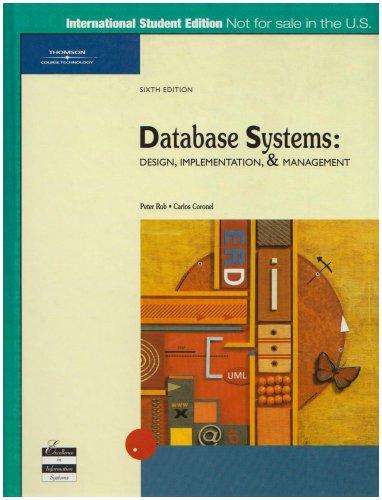Answered step by step
Verified Expert Solution
Question
1 Approved Answer
Step through the following commands and investigate on how to use each of these commands to create a file, change permissions on that file, and
Step through the following commands and investigate on how to use each of these commands to create a file, change permissions on that file, and perform other related tasks. Heres the revised stepbystep exercise:
Create an Empty File
o The touch command is used to create an empty file.
o Example: Open a terminal and run the command touch newfile.txt
o Instruct students to replace "newfile.txt with the desired filename with their initials attached. Screenshot #
List Files and Directories
o The ls command is used to list files and directories in the current directory.
o Use the following commands to show a variety of information about files and directories. How do you tell a file from a directory?
o Try these examples: Screenshot #
ls list all files and directories
ls l list in long format
ls a list including hidden files
Display File Content
o The cat command is used to display the content of a file.
o An example: Run the command cat newfile.txt include your initials
o Instruct students to observe that the file is empty. Screenshot #
Create a new user account using the useradd command:
o sudo useradd username Replace username with the desired username.
o Set a password for the new user:
o sudo passwd username
o Youll be prompted to enter and confirm the password.
o Verify the user by running:
o id username
Screenshot #
o This command will display the users details, including the user ID UID and group ID GID
Change Group Ownership
o The chgrp command is used to change the group ownership of a file or directory.
Change User Ownership
o The chown command is used to change the user ownership of a file or directory.
o An example: Run the command chown user newfile.txt replace user with your username Screenshot #
o Instruct students to replace "user with an actual username.
Change File Permissions
o The chmod command is used to change file permissions read write, execute
o Provide an example: Run the command chmod newfile.txt
o What does doLook it up
Move or Rename the File
o The mv command is used to move or rename files and directories.
o Examples:
Move the file to a different directory: mv newfile.txt pathtodestination
Rename the file: mv newfile.txt renamedfile.txt Screenshot #
Copy the File
o Explain that cp is used to copy files and directories.
o Provide examples:
Copy the file to a different directory: cp newfile.txt pathtodestination
Copy the file with a new name: cp newfile.txt backupnewfile.txt
Screenshot #
Practice these commands in a terminal. If they have any more questions or need further assistance, feel free to ask!
Additional consideration in the Linux part of the course are answers to the following questions:
What is absolute and relative paths in Linux refer to
How do you install updates to your Linux Distribution?
How do you use the help or h option to learn about a command?
Step by Step Solution
There are 3 Steps involved in it
Step: 1

Get Instant Access to Expert-Tailored Solutions
See step-by-step solutions with expert insights and AI powered tools for academic success
Step: 2

Step: 3

Ace Your Homework with AI
Get the answers you need in no time with our AI-driven, step-by-step assistance
Get Started


